Sinaia and Bran Castle, Romania
22 May 2019
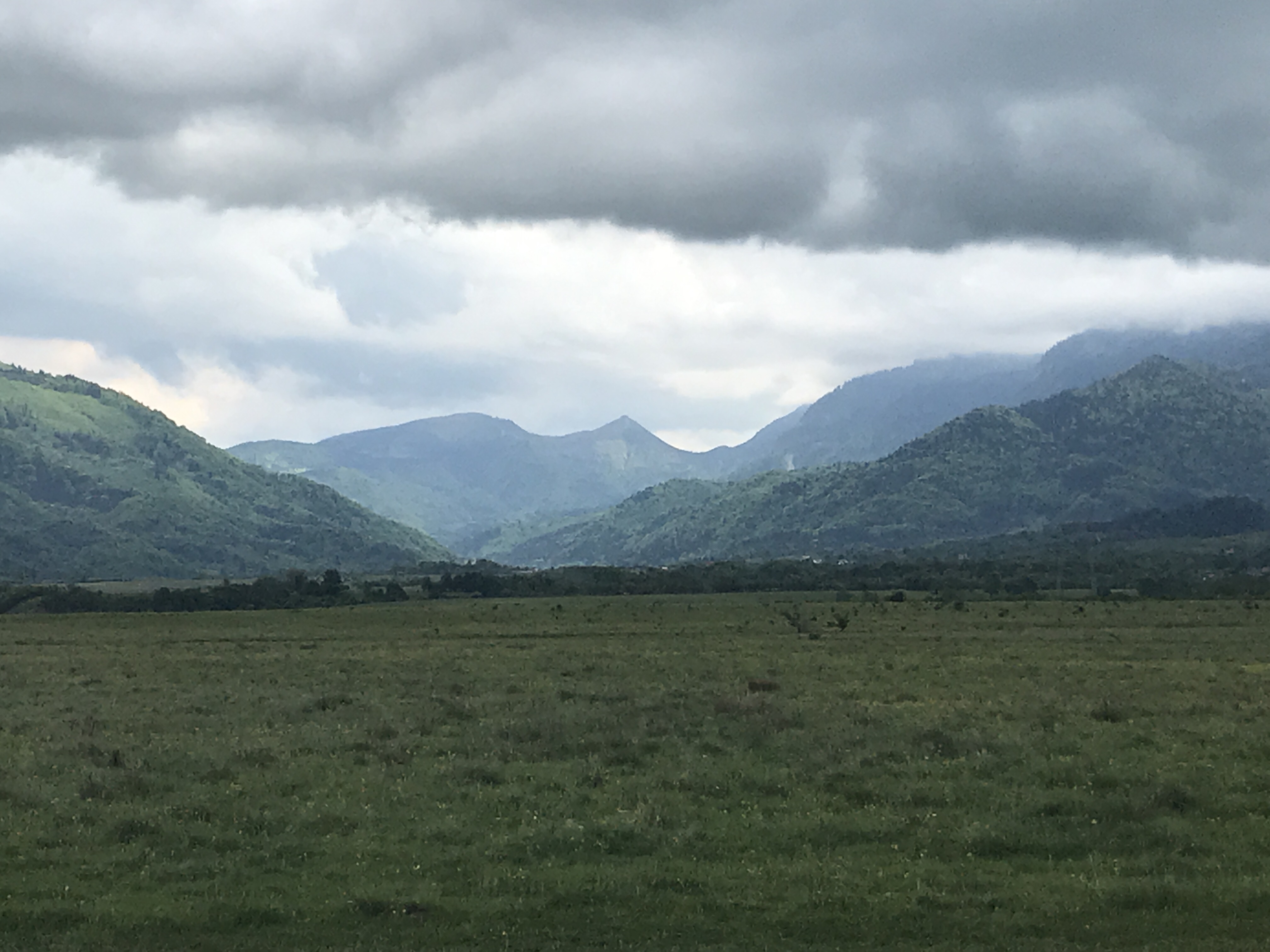 Any science fiction buff recognizes the Carpathian Mountains. These mountains form a 900-mile range in Central and Eastern Europe with peaks reaching upwards of 7800 feet. Over half of the Carpathians lie in Romania, where the forests are home to brown bears, lynxes and wolves. Its passes are gateways to Transylvania, the land of the Magyar, the Moc and Romanian peoples – and Count Dracula. There is a drapery of snow across distant peaks and a layer of clouds hover over the range. I can hear the “children of the night” howling my welcome.
Any science fiction buff recognizes the Carpathian Mountains. These mountains form a 900-mile range in Central and Eastern Europe with peaks reaching upwards of 7800 feet. Over half of the Carpathians lie in Romania, where the forests are home to brown bears, lynxes and wolves. Its passes are gateways to Transylvania, the land of the Magyar, the Moc and Romanian peoples – and Count Dracula. There is a drapery of snow across distant peaks and a layer of clouds hover over the range. I can hear the “children of the night” howling my welcome.
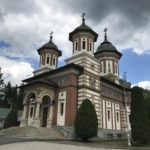 Our first stop is the Sinaia Monastery, named for the biblical Mount Sinai and founded in 1695 as part of the Bucharest archdiocese. Located in the scenic Prahova Valley, the monastery is built in the Brâncovenesc style and consists of two courtyards, two churches, and a handful of Christian Orthodox monks, just 13.
Our first stop is the Sinaia Monastery, named for the biblical Mount Sinai and founded in 1695 as part of the Bucharest archdiocese. Located in the scenic Prahova Valley, the monastery is built in the Brâncovenesc style and consists of two courtyards, two churches, and a handful of Christian Orthodox monks, just 13.
The Brâncovenesc style, also known as Wallachian/Romanian Renaissance, is an architectural style that evolved during the administration of Prince Constantin Brâncoveanu in late 17th – early 18th centuries. Brâncoveanu was an administrator of the Principality of Wallachia under the Ottomans. The style was a combination of Byzantine, Ottoman, Renaissance and Baroque. Churches retained Orthodox exteriors but with interesting Islamic features, especially around doors and windows. The resulting ediface has simple, clean architectural lines with a minimum of exterior hoopla.
 The Monastery library is known for its possession of the earliest Romanian Bible, dating from 1668. By 1948, with the support of the Bucharest archdiocese, and thanks to King Carol I, the Great Church of the monastery became the first church to use electric lights in Romania. Yet, the complex retains a rustic atmosphere
The Monastery library is known for its possession of the earliest Romanian Bible, dating from 1668. By 1948, with the support of the Bucharest archdiocese, and thanks to King Carol I, the Great Church of the monastery became the first church to use electric lights in Romania. Yet, the complex retains a rustic atmosphere
Two churches are in the monastery, the Old Church built in 1695 and just recently restored, and the Great Church, built in 1842. The monastery itself was built to serve as a fortress between Brașov and Bucharest. Its massive 2-ton bell was installed in 1892. Period furniture, golden mosaics and frescoes, and gold-plated royal thrones are on display.
Our next destination is one of the most spectacular sites of the region.
 In 1873, workers began a housing project for King Carol I. It was to be a project never to be finished even after 40 years. Peleș Castle is a Neo-Renaissance castle in a gorgeous green and forested area of the Carpathian Mountains and walking through its rooms is an elaborate tour de force.
In 1873, workers began a housing project for King Carol I. It was to be a project never to be finished even after 40 years. Peleș Castle is a Neo-Renaissance castle in a gorgeous green and forested area of the Carpathian Mountains and walking through its rooms is an elaborate tour de force.
For a relatively poor country, there must have been shock and awe when this grandiose “summer retreat” of 34,000 sq. foot, 170-room monstrosity was built. Today’s cost would be upwards of 120 million U.S. dollars. Building for 10 years with additions made up to King Carol’s death in 1914, Peleș became the first castle fully powered by its own locally produced electricity and first elevator in Romania. And, unusual for most royals, the monarchs shared a bedroom. They did not need to share baths as there are 30 of them. What is perhaps most striking is the use of numerous species of wood used for all aspects of the castle. The ceilings, walls, floors, carved timbers and decorations, and furniture are superb. From Venice to Germany, from Spain’s Alhambra to Austrian elegance, if the King wished for something, be hanged a royal budget! Pay the 35 Lei fee for photos!
Rooms are filled with priceless statues, paintings, furniture, oriental rugs, gold, silver, stained glass, ivory, fine china, porcelain, tapestries, Murano Glass chandeliers, and rugs. The gardens, fountains, hand-painted murals, ornate timber framing, Carrara marble statuary, and hand-painted stained glass are lavish. No detail is overlooked. The Castle’s rooms display one of the finest collections of art in Eastern and Central Europe, and a 4,000-piece armor and arms collection. The royals lived well.
 The gardens and terrace views over the mountains are magnificent. King Carol knew how to pick location. His architect, a German, won the competition for the castle by presenting a unique design of a palatial alpine palace of classical European style but with Italian and German influences along Renaissance traditions. A unique 217-foot central tower was added by a Czech architect. Think of “Crazy Ludwig’s” Neuschwanstein with a few Romanian influences. But then King Carol I was Prince Karl Eitel Friedrich Zephyrinus Ludwig of Hohenzollern-Sigmaringen and an import from Germany who took over the Romanian throne by invitation of the Romanians.
The gardens and terrace views over the mountains are magnificent. King Carol knew how to pick location. His architect, a German, won the competition for the castle by presenting a unique design of a palatial alpine palace of classical European style but with Italian and German influences along Renaissance traditions. A unique 217-foot central tower was added by a Czech architect. Think of “Crazy Ludwig’s” Neuschwanstein with a few Romanian influences. But then King Carol I was Prince Karl Eitel Friedrich Zephyrinus Ludwig of Hohenzollern-Sigmaringen and an import from Germany who took over the Romanian throne by invitation of the Romanians.
Foreign dignitaries as varied as Richard Nixon, Muammar Gaddafi, and Yasser Arafat were welcomed at the castle. Royal visitors included Kaiser Franz Joseph I of Austria-Hungary, who was suitably impressed with his own suite and its “riches.” Another wonderfully colorful royal who lived here while her own castle was being built was Queen Marie. Queen Marie was the last Queen of Romania (1914-1927), Carol’s daughter-in-law and wife of Ferdinand I, granddaughter to the U.K.’s Queen Victoria and of Emperor Alexander II of Russia. Ironically, this royal has a fascinating connection to the United States.

Queen Marie room at Maryhill
Maryhill Museum of Art – Surrounded by heat, rattlesnakes and brown hills that see less than 9” of rain a year, Washington’s arid southeast is an unlikely site for a three‑story edifice filled with priceless art and Romanian treasures. In 1907, Samuel Hill, flamboyant Seattle lawyer, was searching for a Promised Land in which to establish a Quaker agricultural colony. He chose the Columbia River Gorge at what is now Goldendale, 100 miles east of Portland, Oregon and Vancouver, Washington. By 1914, Sam had started construction of an elaborate Flemish‑style chateau, dubbed the Castle on the Columbia.
The suggestion for a museum originated with Loie Fuller, known by her adoring public as La Loie. In 1892, Loie made a stunning debut in “The Follies Bergére” with her picturesque use of masses of transparent drapery, lighting and sensuous movements imitating butterflies, flowers and flames. Loie created quite a sensation when the stage lights struck her fluttering ‑ and sheer ‑ material.
Among others, Loie attracted the attention of Toulouse‑Lautrec, who did a lithograph of her; Jules Cheret, who did her poster; Rodin, who inscribed a small model of his The Thinker “To Loie”. Another of Loie’s friends was the heiress Alma de Bretteville Spreckels, who married and inherited the fortune of her Sugar Baron Daddy, Adolph Spreckles. She was known as “Big Alma” (she was 6 feet tall) and claimed herself as a descendent of Charlotte Corday who stabbed French Revolutionary Jacobin Jean-Paul Marat in his bath. Alma loved to greet people with a big laugh and “Got anyone you want murdered?” Along with Queen Marie, this was quite a ménage à trois of tea ladies.
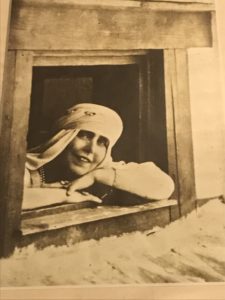 Queen Marie was indebted to Hill for his aid to devastated Romania following WWI. Perhaps the adage “All work and no play….” attracted her to Sam and his colorful friends. I am also told she had six children by Ferdinand and at least seven lovers, not necessarily approved by Ferdinand but then he also preceded her in death by many years. Queen Marie loved saying, “I am not a dull boy.” The Romanians seem to love her.
Queen Marie was indebted to Hill for his aid to devastated Romania following WWI. Perhaps the adage “All work and no play….” attracted her to Sam and his colorful friends. I am also told she had six children by Ferdinand and at least seven lovers, not necessarily approved by Ferdinand but then he also preceded her in death by many years. Queen Marie loved saying, “I am not a dull boy.” The Romanians seem to love her.
During a celebrated (and much‑written‑about) cross‑country train tour of America, Queen Marie dedicated Maryhill Museum to beauty and peace. Currently, Maryhill has the Queen Marie Room which displays the two‑piece gold lame and rhinestone gown and train worn by Queen Marie to the coronation of her cousin, Czar Nicholas II of Russia. The museum also houses royal furniture, including a beautifully crafted throne, portraits and other memorabilia.
After Romania’s King Michael (brother to Ferdinand) abdicated in 1947, at the behest of the Communists, this property along with all other royal estates were seized. Communist leader and generally not a nice guy, Nicolae Ceauşescu did not like the castle and closed it. After the 1989 Revolution, Peleș was opened to the public. In 1997, the castle was returned to the Royal Family and fortunately for visitors, the family wished it to remain as a national museum. It is a castle not to be missed!
Along with Peleș Castle, the favored summer residence of Queen Marie was Bran Castle, home to Vlad Tepes in the 15th century. The Queen did a major remodel of the castle and it could not be more opposite from the opulent Peleș Castle!
 One must have lived in a cave not to have heard of Bran Castle, one of the most famous castles in Europe, and the setting of Bram Stoker’s vampire novel. The castle was built in 1378 atop a 200-foot cliff that served as a customs’ checkpoint and a fortification for protecting the border between Transylvania and Wallachia. Falsely attributed as the castle of Dracula myth, it took the Romanians a while to realize, instead of denying the inevitable, to embrace it. The dollars have rolled in ever since.
One must have lived in a cave not to have heard of Bran Castle, one of the most famous castles in Europe, and the setting of Bram Stoker’s vampire novel. The castle was built in 1378 atop a 200-foot cliff that served as a customs’ checkpoint and a fortification for protecting the border between Transylvania and Wallachia. Falsely attributed as the castle of Dracula myth, it took the Romanians a while to realize, instead of denying the inevitable, to embrace it. The dollars have rolled in ever since.
 Bran Castle, 17 miles southwest of Brașov, is a national monument in Romania and its most visited site with almost a million visitors a year. If visiting on Halloween, you might even be able to sleep overnight in the medieval fortress. The castle is very impressive on approach, up a steep incline, but inside Queen Marie has remodeled with simple lines, white plaster walls, numerous family photos and a minimum of posh. It looks to be comfortable living and affords incredibly beautiful views of the surrounding forests and mountains. The narrow stone stairways, rooms and furnishings, give one a first-hand look at the life of the nobles who ruled the region in the 15th and 16th centuries. Some of those princely inhabitants were colorful and infamous, but one was not Count Dracula; however, one inhabitant was the legendary character upon which the mythical vampire was based.
Bran Castle, 17 miles southwest of Brașov, is a national monument in Romania and its most visited site with almost a million visitors a year. If visiting on Halloween, you might even be able to sleep overnight in the medieval fortress. The castle is very impressive on approach, up a steep incline, but inside Queen Marie has remodeled with simple lines, white plaster walls, numerous family photos and a minimum of posh. It looks to be comfortable living and affords incredibly beautiful views of the surrounding forests and mountains. The narrow stone stairways, rooms and furnishings, give one a first-hand look at the life of the nobles who ruled the region in the 15th and 16th centuries. Some of those princely inhabitants were colorful and infamous, but one was not Count Dracula; however, one inhabitant was the legendary character upon which the mythical vampire was based.
For those cave dwellers among us, Irish author Bram Stoker wrote Dracula in 1897, immortalizing his infamous character, Dracula, a Transylvanian Count with a castle located high above a valley perched on a rock with a flowing river below in the Principality of Transylvania. A critical point here is that Stoker never visited Romania or Bran Castle, and Dracula, thankfully, never existed.
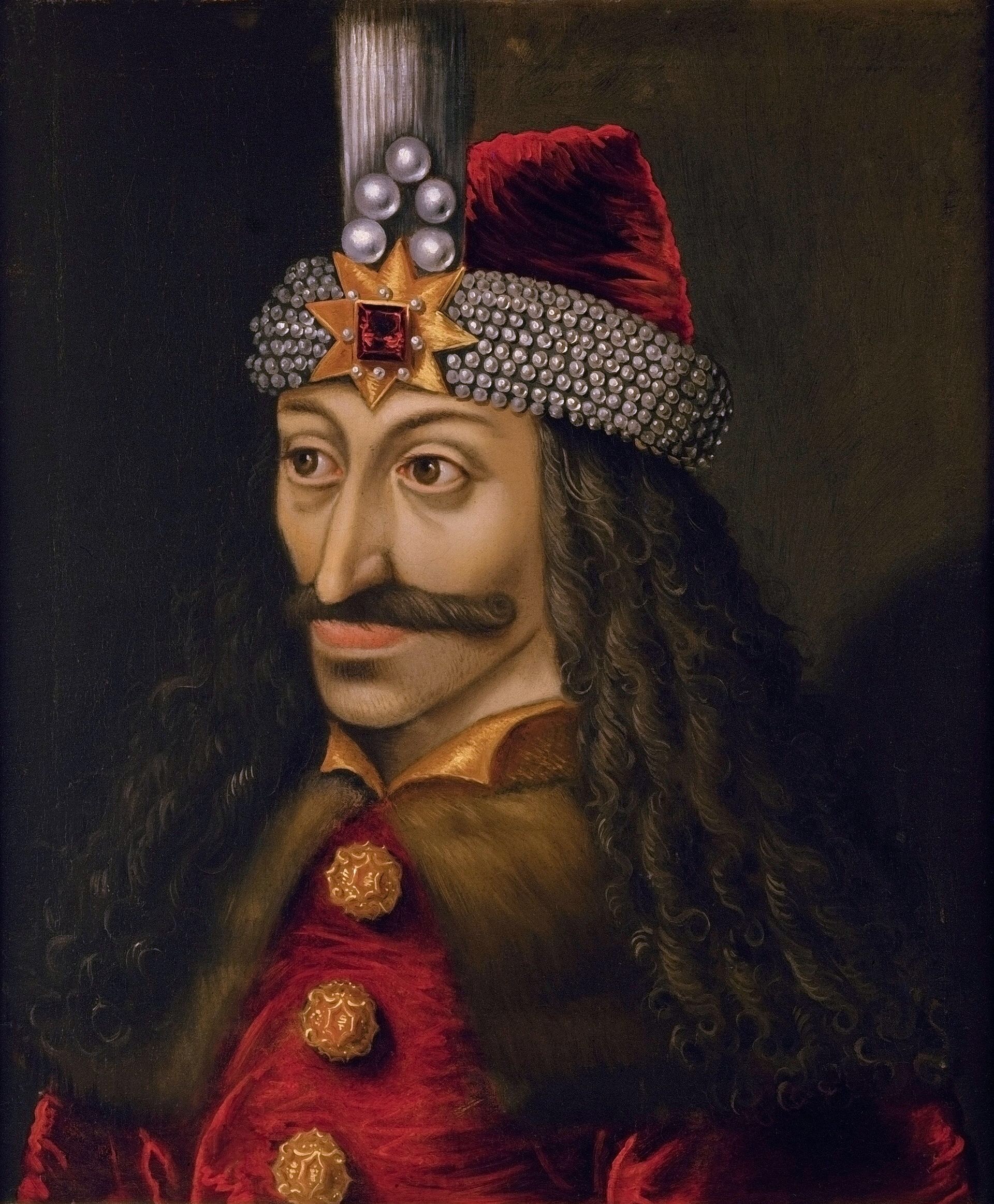 Who did exist was the historical figure Vlad Tepes or Vlad Dracul (a family name), more vividly known as Vlad the Impaler. Vlad Dracul was the ruler of the vast territory of Wallachia (which includes Budapest) from 1456-1462 and 1476. Yes, a prince would definitely have a castle. Because Bran Castle is the only castle in all of Transylvania that accurately fits Bram Stoker’s description of Count Dracula’s Castle, it is known throughout the world as Dracula’s Castle.
Who did exist was the historical figure Vlad Tepes or Vlad Dracul (a family name), more vividly known as Vlad the Impaler. Vlad Dracul was the ruler of the vast territory of Wallachia (which includes Budapest) from 1456-1462 and 1476. Yes, a prince would definitely have a castle. Because Bran Castle is the only castle in all of Transylvania that accurately fits Bram Stoker’s description of Count Dracula’s Castle, it is known throughout the world as Dracula’s Castle.
The name Dracula derives from the Crusader Order of the Dragon to which both Vlad Tepes and his father had been members. (His half-brother was Vlad the Monk.) The rest of the Dracula myth derives from the legends and popular beliefs in ghosts and vampires prevalent throughout Transylvania. The description of Vlad Tepes as a blood-thirsty ruthless despot was for largely political reasons and is both fiction and reality. But then it was rough times for Wallachians.
Dracula may not have inhabited Bran Castle, but Vlad Tepes slept here. (Our guide pointed out the location where Vlad’s wife leaped to her death, a critical theme in Jack Palance’s 1974 brutal portrayal of the Count.) Vlad was involved in several campaigns to punish the German merchants of Brașov for failing to abide by his commands as regards their trade in his Wallachian markets. It is also told by locals that he fell in love with a blonde, blue-eyed young Saxon wench from the village. When the villagers, and probably his wife, objected, they bullied the young girl and soon-to-be mother of Vlad’s offspring. As a result of the harassment, Vlad impaled some of the villagers as punishment.

German engraving of Vlad the Impaler and victims.
Vlad did earn his sobriquet of Vlad the Impaler. Vlad and his younger brother Radu were held as hostages of the Ottoman Empire in 1442 as a method of securing their father’s loyalty to ruthless Sultan Mehmed II. Supposedly treated fairly well by the Sultan, Vlad actually attacked Wallachia after his father and eldest brother were murdered and an illegitimate cousin was placed on his throne by Hungary.
Vlad attacked again in 1456, this time with Hungary’s support. This time he was more successful and thus began a purge of the Wallachian nobility. For those who supported his enemies and usurpers of the throne, Vlad plundered their villages, taking the captured people to Wallachia where he had them impaled, inspiring his nickname. It also worked as an effective deterrent to unrest. But only temporarily. The Ottomans were no pushovers for cruelty.
The Ottoman, Sultan Mehmed II, ordered Vlad to pay him homage, but Vlad had the Sultan’s two envoys captured and impaled. In February 1462, he attacked Ottoman territory, massacring tens of thousands of Turks and Bulgarians. Mehmed counterattacked but ultimately the main Ottoman army left Wallachia.
However, in the fall of 1462, Hungarian King Matthias Corvinus reached his limit of patience with bloody Vlad and ordered his army to capture Vlad Tepes near the fortress of Rucar. It appears Vlad was taken to Bran Castle and locked up there for two months before being packed off to Visegrád Fortress near Budapest where he was imprisoned from 1463 to 1475. During this period, stories about his cruelty started to spread.
Vlad was released from Visegrád in 1475 at the request of King Stephen III of Moldavia. He returned to fight in Corvinus’s army against the Ottomans in Bosnia where Hungarian and Moldavian troops helped him dethroned usupers. However, his enemies returned with Ottoman support. Vlad was killed in battle before 10 January 1477.
Books describing Vlad’s cruel acts were among the first bestsellers in the German-speaking territories. In Russia, popular stories suggested that Vlad was able to strengthen government only through brutal punishments, and a similar view was adopted by most Romanian historians in the 19th century. Most Romanian artists have regarded Vlad as a just ruler and a realistic tyrant who punished criminals and executed unpatriotic boyars. For those who read Stoker’s Dracula or watched such actors as Christopher Lee, Bela Lugosi, Jack Palance, Frank Langella, or Max Schreck in the 1922 classic “Nosfuratu” portray this classic character, Vlad Tepes will always be Dracula.
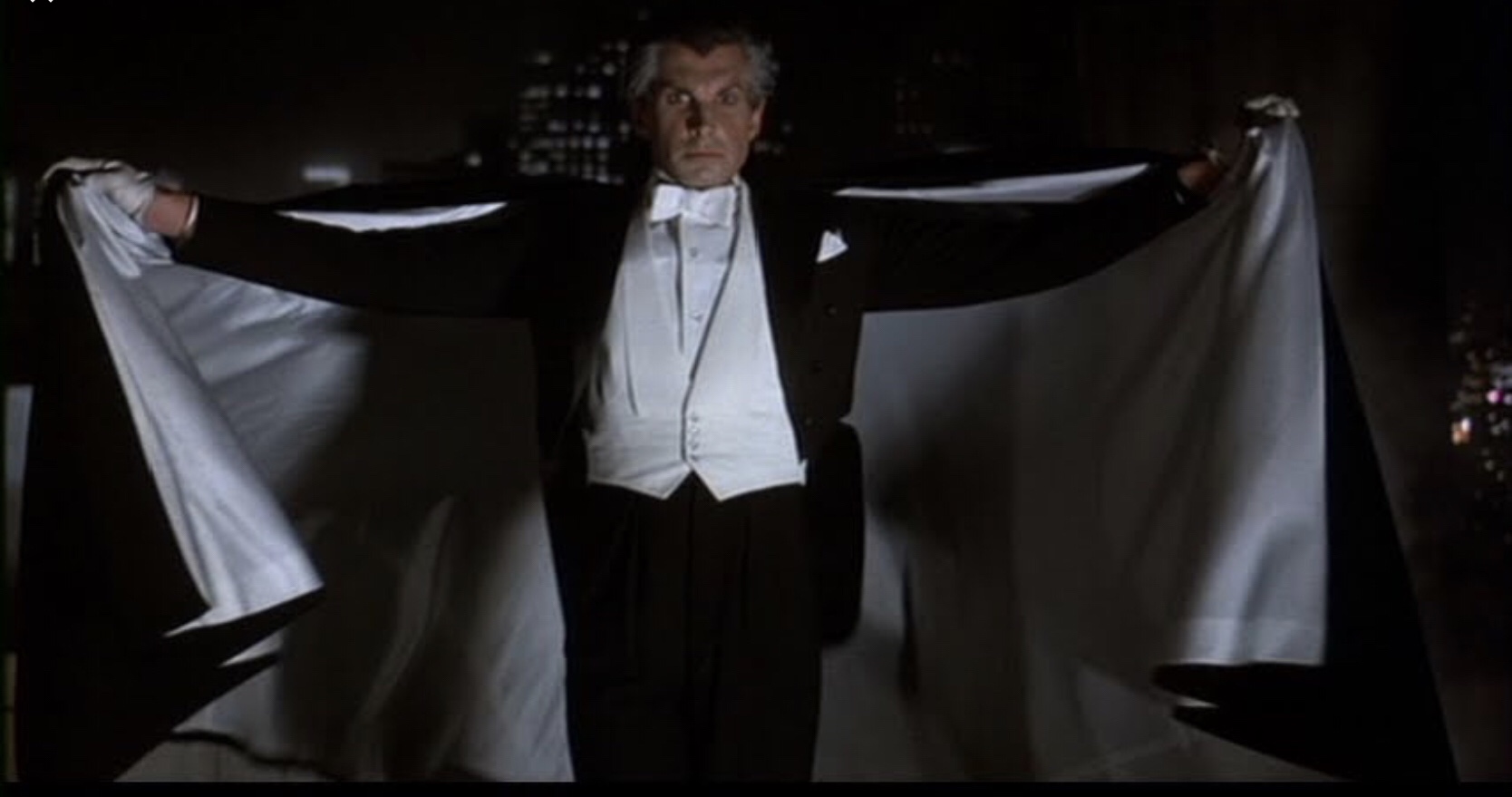 There is a great line in George Hamilton’s “Love At First Bite” made in 1979. Playing the quite handsome vampire, Dracula is living in Romania and the Communist watchdogs want him to pack up and move to an efficiency apartment. All the local folks are fed up with the count’s crazy antics and conspire to get rid of Dracula. Hamilton becomes incensed about this and screams,
There is a great line in George Hamilton’s “Love At First Bite” made in 1979. Playing the quite handsome vampire, Dracula is living in Romania and the Communist watchdogs want him to pack up and move to an efficiency apartment. All the local folks are fed up with the count’s crazy antics and conspire to get rid of Dracula. Hamilton becomes incensed about this and screams,
“What are you all going to do for excitement without me around here? It’s going to be as boring as Bucharest on a Monday night!”
Perhaps.
0 Comments